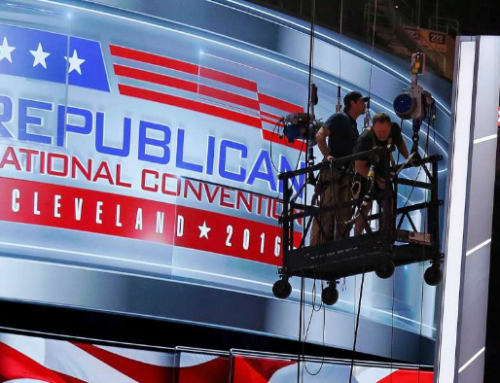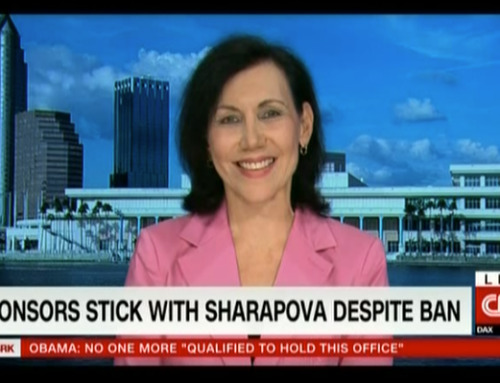Julie took time out of her busy schedule to have a conversation with us, a conversation that included the terms “choiceful,” “borg-ish” and “bully pulpit,” spoke to the point of chocolate Swoops and, in which, without prompting, the interviewee talks about scratching itches:
1) What is the thing you consistently see brands getting wrong these days?
Brands are scared. They don’t take risks. They are often stuck – for lots of seemingly good business reasons – in thinking that is decades old. Yes it’s a confusing time, but in confusing times, the brave prevail. There is a thinking-doing gap a mile wide and deep. Lots of great trend watching and debate on the sidelines… fewer gutsy CEO’s and CMO’s shaking it up.
2) You write about the “Brand Inside: Brand Outside™” theory that all individuals from CEOs to idle bystanders “play equally in the evolution of the brand.” If that’s true, is it reasonable to say that a brand owner can never fully control his or her brand meaning?
It is not only reasonably true that a brand owner cannot control her brand’s meaning, it is TRUE. Brands are co-created with consumers. Try an experiment. Substitute the word CULTURE for brand.
Consumers see, touch, feel, taste brands and create their own meaning. Whether it’s Tide or France. This is why social media, consumer generated content are with us in such a big way and everyone is scrambling to figure them out. But they are only branches on a bigger tree. The main point is that brands don’t sell people. People choose brands because they mean something to them. It doesn’t release the brand owner from duty – they still have to vigilantly watch, listen, and yes, invent new meaning. But they don’t own the meaning. Just like no one owns the sky. This is what makes this all so much fun.
3) I increasingly see brand campaigns that employ dumb and clunky vanity URLs (e.g.: To get YOUR exclusive look at the most recent interview go to Oddpodzgreatinterviewithjulieanixter.com). These can’t really work can they? I mean, WTF?
Hmmm…clunky vanity URLs. That’s a nice new note in the vernacular. Good writing, good content, a straight shot to the heart always wins. Vanity and clunky don’t even sound good together, do they?
4) LAGA did very successful brand development for the Hershey’s Swoops, which are like Pringles potato chips but made of chocolate. (!) Can you explain the appeal of this product? Really, no joke; why are these thighs so popular?
The appeal of Swoops was simple. They took your favorite food (Chocolate) combined with one or more of your favorite chocolate brands (Hershey’s, Reese’s, Junior Mints) and gave you a new experience. The experience was based on a shape (how can it be that thin?) fresh, novel, portable, less caloric, more choiceful than the candy bar. All the flavor, not all of the calories. It was a bold and successful experiment we were proud to be a part of. We like to shake things up.
5) You went to Oberlin and LAGA is headquartered in Ohio. Why do Ohio State fans riot when they lose AND when they win? Are there paint chips in the water there or something?
If you knew much about Oberlin you would probably know that I am not qualified to answer questions about college football. See my husband for that, who went to UCLA, and is overripe with qualifications to talk about College fandom….when you can actually reach him through all that… NOISE.
6) You believe in the idea that brands must be distinct or extinct. Yet, everywhere I look, I see brands executing in the blandest, more borg-ish ways possible. Is there any truth to the “tallest blade of grass” theory in a brand’s decision making?
There’s still truth in that theory, but like all good theories, it’s most interesting in its declarative black and white intellectual garb.
That phrase came from Tom Peters’ Bully Pulpit. It actually contains a lot more nuance than the binary extinct or distinct stance. For instance, Rosie O’Donnell is not “extinct” nor was her version of “distinction” all that swell on “The View.” Oprah just bought a cable channel. You have to understand where these phrases come from…they are meant to stir people to take action for exactly the reason you cite…There is too much (bland) talk and not enough bold action.
7) And to the previous question, why do so many brands have just zero sense of humor about themselves? Don’t they realize consumers like a sense of humor?
Humor is…a gift, a skill, an art. There are big brands…but not lots of big artistic brands. Money makes people less funny and a lot less artistic. Except for Julian Schnabel, who is one of my heroes.
8) Your book “The Big Moo” has been a big success. Who should be reading this and what, in practical, no-PR-speak terms, does a brand owner have to gain from the information?
Any brand owner could keep “The Big Moo” on their shelf or bedside table for those rare times when they are a) bored, b) uninspired, c) depressed, or d) being asked for advice. It scratches all kinds of itches remarkably.





